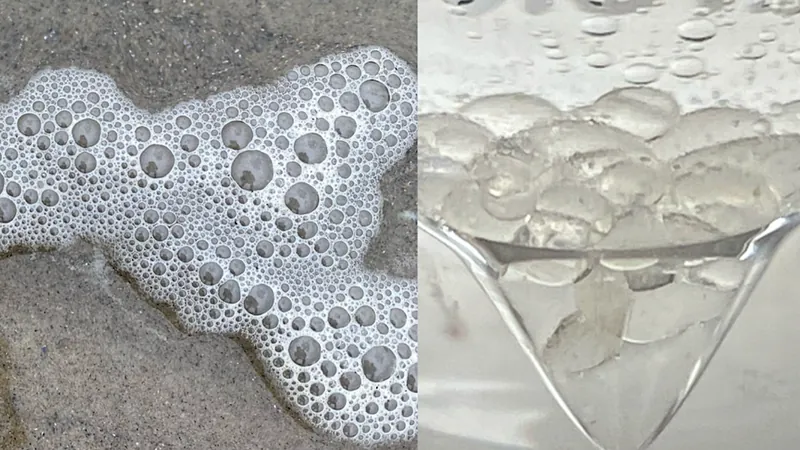
Extraterrestrial Secrets: Sea Foam's Cosmic Connection Revealed!
2024-10-03
Recent research has unveiled a fascinating link between sea foam and cosmic dust, suggesting that the mysteries of the universe may be closer to our shorelines than we ever imagined.
Scientists have discovered evidence of a meteoritic substance known as hemoglycin in both ancient and modern stromatolites, which are layered structures created by microorganisms. To explore this cosmic connection in contemporary settings, researchers collected sea foam samples from two beaches in Rhode Island and conducted rigorous analyses using Folch extraction methods. This process allowed them to concentrate the amphiphilic components commonly found in such foam.
What was particularly striking is that hemoglycin polymer amide molecules—previously identified in meteorites and stromatolites through advanced MALDI mass spectrometry—were also detected in the samples taken from the sea foam. In addition, the isotopic composition of the remnants strongly indicated an extraterrestrial origin for these substances.
The unique properties of sea foam seem to be attributed to the formation of intricate hemoglycin structures. Researchers propose that these extended lattices endow the foam with stability, while its impressive lightness might originate from a photolytic hydrogen production process. Such features could explain why sea foam appears to dance and detach easily in windy conditions, floating whimsically above the waves.
During a field study at Lloyds Beach in January 2024, researchers observed a sprawling stretch of sea foam that extended over 100 meters into the ocean. The high-energy environment that day resulted in foam riddled with visible sand and plant debris due to the turbulent mixing caused by wind and currents.
An intriguing question arises from these findings: does hemoglycin merely exist within sea foam or does it play an essential role in its structure? Research suggests that the polymer's ability to form vesicles could indeed support the structural integrity of the foam. Prior studies have demonstrated that hemoglycin can assemble into a planar hexagonal lattice, covering surfaces and potentially reinforcing surfactant layers to create resilient and buoyant foam even as water evaporates.
Moreover, the potential for sea foam to be propelled into the air has been linked to a possible water-splitting mechanism involving hydroxyglycine. This reaction, facilitated by interactions with iron, could generate hydrogen gas, which might fill the foam cavities and enhance its ability to detach and soar.
These revelations not only spark curiosity about the physical properties of sea foam but also invite deeper exploration into the cosmic origins of life's building blocks here on Earth. As we continue to investigate, who knows what other secrets might wash ashore in this seemingly mundane ocean phenomenon?
Stay tuned for further discoveries as scientists plunge deeper into the mysteries of our planet’s connections to outer space!


 Brasil (PT)
Brasil (PT)
 Canada (EN)
Canada (EN)
 Chile (ES)
Chile (ES)
 España (ES)
España (ES)
 France (FR)
France (FR)
 Hong Kong (EN)
Hong Kong (EN)
 Italia (IT)
Italia (IT)
 日本 (JA)
日本 (JA)
 Magyarország (HU)
Magyarország (HU)
 Norge (NO)
Norge (NO)
 Polska (PL)
Polska (PL)
 Schweiz (DE)
Schweiz (DE)
 Singapore (EN)
Singapore (EN)
 Sverige (SV)
Sverige (SV)
 Suomi (FI)
Suomi (FI)
 Türkiye (TR)
Türkiye (TR)